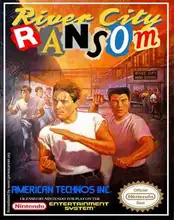You know the feeling. Booting up an old cartridge or firing up DOSBox, ready for adventure. Sometimes it was a sprawling quest with turn-based battles, but often, it was something else entirely – an action game, a platformer, maybe even a strategic title. Yet, you found yourself collecting items, watching numbers go up, getting stronger, or making choices that felt meaningful. What you were experiencing was the subtle, sometimes overt, inclusion of RPG elements.
These weren't always full-blown role-playing games, but they borrowed heavily from the genre's playbook. And honestly? It made those classic games even better, adding layers of depth and replayability that kept us hooked for hours on end.
What Exactly Are RPG Elements Anyway?
Before they became ubiquitous across almost every genre today, certain features were hallmarks of the classic RPG. When we talk about RPG elements sneaking into other games, we usually mean things like:
- Character Progression: Gaining experience points (XP) to level up, increasing stats (strength, defense, speed, magic, etc.).
- Inventory Management: Collecting items, weapons, armor, and managing limited space.
- Quests and Objectives: Following a narrative, completing specific tasks, talking to NPCs for hints or jobs.
- Stats and Equipment: Numerical representations of character abilities and the gear they use.
- Choice and Consequence: Sometimes, even simple dialogue options or branching paths.
- Exploration and World Interaction: Discovering secrets, interacting with the environment in non-linear ways.
These features, when added to a game primarily focused on jumping, shooting, or strategizing, could transform the experience entirely.
Beyond the Dungeon: Where RPG Elements Popped Up
Think back to some classics that weren't strictly labeled "RPG" but definitely had that flavor:
- Action-Adventure: Games like Zelda II: The Adventure of Link immediately come to mind. You gained experience, leveled up your attack, magic, and life, and explored an interconnected world with towns and NPCs. Metroid also featured exploration, power-ups that felt like progression, and a growing inventory of abilities.
- Platformers: While rarer, some platformers included collection mechanics that boosted stats or granted new abilities, blurring the lines. Castlevania II: Simon's Quest is a prime example, with its day/night cycle, towns, talking to villagers (sometimes lying ones!), collecting items, and gaining experience to level up Simon's attack power.
- Strategy/Simulation: Even games like Master of Magic (available on GOG!) or X-COM: UFO Defense had strong RPG elements. Your heroes or soldiers gained experience, improved stats, and could be equipped with better gear, making each unit feel unique and valuable.
- Even Fighting Games? While not deep, the persistent character customization and progression in modes like Soulcalibur's Edge Master Mode hinted at the appeal of carrying progress between fights.
These additions didn't just tack on features; they fundamentally changed how you played and felt about the game.
Why We Loved Them So Much
Adding RPG elements injected several key things into these retro experiences:
- A Sense of Growth: There's something inherently satisfying about seeing your character get stronger, jump higher, hit harder, or learn a new skill. It provided a clear feedback loop for your effort.
- Personalization: Managing inventory or choosing which stats to boost (when applicable) gave you a small way to tailor the experience.
- Increased Replayability: Trying different approaches, aiming for a higher level, or finding all the hidden gear added reasons to revisit a game.
- Deeper Immersion: Quests and NPC interactions helped build a more believable world, even in action-focused games.
This fusion felt innovative and exciting back then. It took familiar gameplay loops and added a compelling layer of long-term investment.
The Legacy: How Retro Shaped Modern Gaming
The trend that started in the retro era – integrating RPG elements into non-RPG genres – is absolutely everywhere today. Open-world games, shooters, even puzzle games often feature progression systems, collectibles, and customizable characters. The seeds were sown in those classic 8-bit and 16-bit titles that dared to mix and match gameplay styles.
Playing retro games today, you can clearly see the origins of design philosophies that dominate the industry now. It's a testament to how powerful and engaging these core RPG concepts are, regardless of the genre they inhabit.
Frequently Asked Questions
- Q: Were these games still considered their original genre? A: Generally, yes. Zelda II is still primarily an action-adventure game, Castlevania II is a platformer, but they are often noted for their inclusion of RPG elements.
- Q: What's the difference between a game with RPG elements and an actual RPG? A: Actual RPGs typically center the entire experience around character development, narrative choice, and often feature more complex combat systems (like turn-based or tactical) as the primary gameplay loop, rather than just one component.
- Q: Can I play these classic games today? A: Absolutely! Many are available on digital storefronts like GOG.com, or playable via emulation with tools like DOSBox, or even found on platforms like Archive.org for preservation purposes.
The next time you're enjoying a retro game that isn't a traditional RPG but lets you level up or manage an inventory, take a moment to appreciate those early RPG elements at work. They were pioneers in making games deeper, more rewarding, and endlessly memorable.

